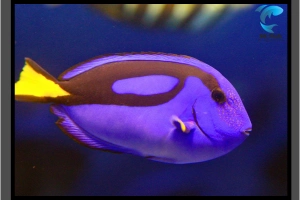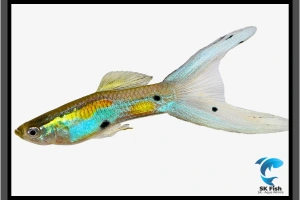Black Clownfish | A Complete Guide to Keeping Clown
Published: 21 Jan 2024
Welcome, marine enthusiasts! In this blog, we will delve into the world of our gorgeous buddies, the black clownfish, and share valuable keeping tips. Clownfish, known for their stunning array of colors, captivate with their unique beauty.
Are you curious about how to care for clownfish? You’re in the right place! Rest assured, here you will find all the essential information, from a caring guide for clownfish to fascinating facts about them.
Let’s get started!
What is Black Clownfish?
Clownfish often thrive better in aquariums than in the wild, making them a highly popular choice, especially for their iconic orange-and-white color combination. In their early stages, clownfish boast vibrant orange hues, gradually transitioning to black as they mature.
The popularity of both black and orange clownfish skyrocketed after the release of the movie ‘Finding Nemo.’ Now, let’s dive into more fascinating details!
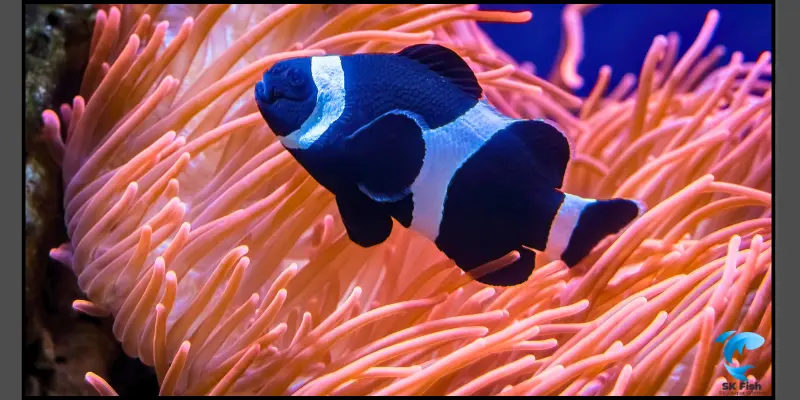
Common Names
The scientific name for the ocellaris clownfish is “Amphiprion Ocellaris.” This captivating underwater companion goes by various names in different countries, including orange clownfish, black clownfish, percula clownfish, marine clownfish, black-finned clownfish, sebae clownfish, midnight clownfish, and ebony clownfish. These names categorize the diverse varieties of clownfish.
Weight and Length
The black clownfish, ideal for aquariums, is typically a small fish with an average size ranging between 3.15 to 4.3 inches. Its weight typically falls around 200 grams.
Lifespan and Reproduction
Clownfish exhibit unique lifespans and reproductive patterns. Generally, they have a relatively short lifespan, lasting about 6 to 10 years, though this can vary.
The reproduction process is nothing short of a marvel. Often found in groups reminiscent of Nemo’s, these groups consist of two mature individuals—one male and one female. Together, they continue the chain of reproduction.
Aquarium Caring Tips for Black Clownfish
Ensuring proper care for clownfish is essential for their longevity. Black clownfish, with their unique body structure, require specific attention to thrive. Let’s embark on the journey to explore the key aspects of their care.
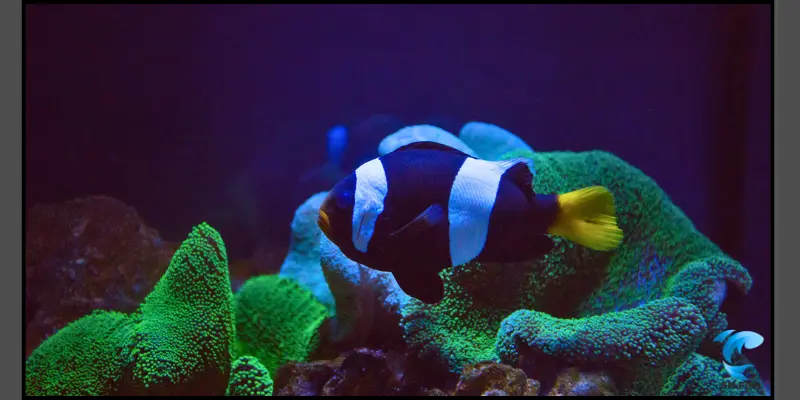
Tank Size
While clownfish can adapt to smaller aquariums, it’s recommended to provide a tank size of at least 20 gallons. This size is ideal for accommodating 5 to 6 clownfish, ensuring they have ample space for swimming.
Tank Decor
Clownfish, celebrated for their vibrant colors and distinctive body structures, thrive in well-decorated tanks. Enhance your tank according to their preferences by incorporating live rocks for hiding spaces.
Create an ocean-like environment with substrate and sand, encouraging natural activities. Introduce artificial plants, making sure to leave sufficient open space for clownfish to swim freely.
Water Conditions
In captivity, maintaining optimal water conditions is crucial for the well-being of clownfish. Keep the water temperature within the range of 25 to 30°C, and maintain a pH level between 8.1 to 8.4, with salinity levels around 1.020 to 1.025.
Utilize high-quality water with effective filtration to ensure a clean and clear environment, removing impurities and promoting a healthy living space. Adequate water movement also contributes to oxygen production for the clownfish.
Feeding Habits
Clownfish, being small omnivores, have a diverse diet that includes both animal and plant-based foods. Their feeding habits encompass algae, frozen foods, pellet food, zooplankton, crustaceans, seaweed, lettuce, and worms.
They prefer small, frequent meals throughout the day rather than large amounts. It’s crucial to avoid overfeeding, ensuring they receive all the necessary vitamins for a healthy life.
Common Disease in Clownfish
- White spot disease
- Brooklynella Hostilis ( rapid gill movement )
- Velvet Disease ( Rapid Breathing, Lethargy, and Rubbing )
- Fin Rot ( This disease occurs because of poor water quality )
If any of these diseases are observed, contacting a local aquarium specialist promptly is advised for proper diagnosis and appropriate treatment.
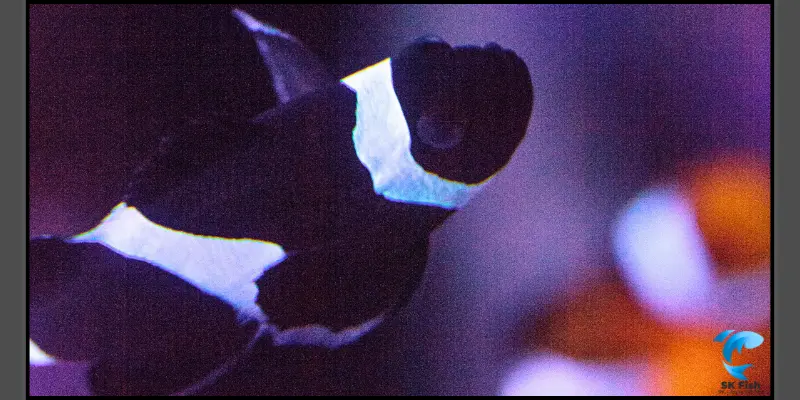
Habitat and Distribution
The black clownfish, with its distinctive characteristics, thrives in specific habitats and showcases a unique distribution pattern. Let’s delve into the details to explore more about its preferred living environment and geographical presence.
Versatile Habitat
Black clownfish are distinctly adapted to specific habitats, predominantly favoring warm oceanic regions. They exhibit a strong affinity for coral reefs, especially within the Indo-Pacific region. These tropical surroundings provide the perfect conditions for their unique behaviors.
Within the black clownfish family, encompassing around 30 different species, habitat preferences can vary based on their specific species. For instance, the maroon clownfish may be commonly found in seagrass beds and mangrove areas, showcasing the diverse habitats within this captivating group.
Geographical Distribution
Clownfish are widely distributed across the globe, with their native habitat primarily being the Indo-Pacific region. This expansive region includes various oceans, such as the Red Sea, the Indian Ocean, and the Pacific Ocean. Additionally, specific countries, including Australia, the Philippines, and Indonesia, contribute to the diverse distribution of clownfish.
For hosting clownfish species, the Great Barrier Reef stands out as an exceptional location. Some species are also found in the Hawaiian Islands, known for their warmer waters, reflecting the diverse preferences of clownfish for different temperature ranges.
Threats to Black Clownfish
Black clownfish encounter several threats, both in captivity and in the wild. In captivity, they are susceptible to challenges such as overfeeding, poor water quality, aggressive tank mates, inadequate tank size, inappropriate anemones, disease outbreaks, and improper acclimatization.
In their natural habitat, the risks are relatively lower due to the protective environment of coral reefs. However, certain predatory fish, including groupers, sharks, and tuna, pose a threat to black clownfish, emphasizing the delicate balance they navigate in the wild.
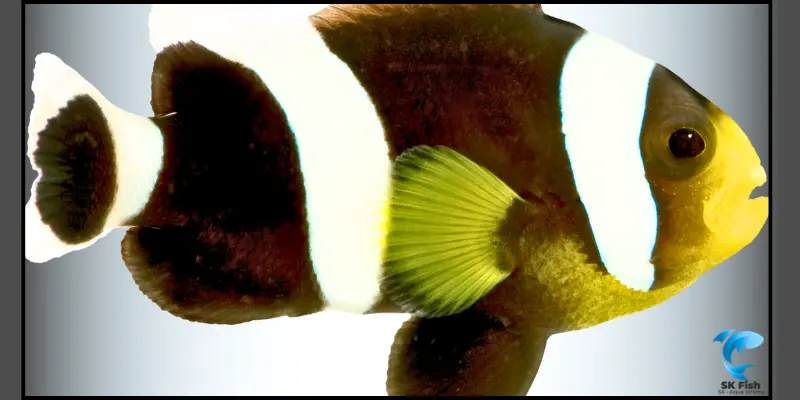
Conclusion
I trust this blog post has provided you with comprehensive insights into all the essential information about the black clownfish. We delved into crucial details, covering their common names, weight, size, lifespan, and reproduction. Caring tips were explored, including aspects like tank size, tank decor, water conditions, feeding habits, and common diseases. Additionally, we explored their habitat and global distribution. Feel free to share your thoughts in the comment section below.
Frequently Asked Questions
How rare are black clownfish?
The black clownfish stands out for its stunning black-and-white coloration. These particular specimens are rare, discovered through ORA’s grow-out system. Among them, the McCulloch clownfish holds the distinction of being one of the rarest clownfish varieties.
Are anemone fish poisonous?
Yes, anemones are indeed venomous organisms. It is strongly advised not to consume these species as they possess toxins that are lethal to their prey.
What are the characteristics of anemone fish?
Clownfish boast a distinctive coloration, characterized by bright orange and white hues, often adorned with three bands around their bodies. Their renowned color palette includes striking combinations of black, white, orange, and purple.
Are black clownfish natural?
Yes, black clownfish are indeed a natural species within the clownfish family. These unique specimens are relatively rare and can be found in the waters of Northeast Australia.

SK Fish is your trusted source for practical fish care tips and delicious seafood recipes. Our team is dedicated to providing reliable, well-researched content for fishing enthusiasts and home cooks alike.

- Be Respectful
- Stay Relevant
- Stay Positive
- True Feedback
- Encourage Discussion
- Avoid Spamming
- No Fake News
- Don't Copy-Paste
- No Personal Attacks



- Be Respectful
- Stay Relevant
- Stay Positive
- True Feedback
- Encourage Discussion
- Avoid Spamming
- No Fake News
- Don't Copy-Paste
- No Personal Attacks
